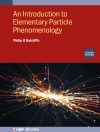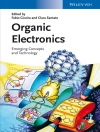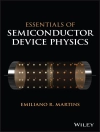This book covers a broad range of interdisciplinary topics, focusing on atoms and molecules in intense laser fields, excitation processes in intense laser fields, photonics and materials, high-order harmonics generation, XFEL, high-power lasers and their applications, and quantum computing. This seventeenth volume features contributions from world-renowned researchers on topics such as applications of attosecond and femtosecond laser pulses, coherence and dynamics in quantum systems, and applications of super-intense laser fields.
The PUILS series delivers up-to-date reviews of progress in this emerging interdisciplinary research field, spanning atomic and molecular physics, molecular science, and optical science, which has been stimulated by the recent developments in ultrafast laser technologies. Each volume compiles peer-reviewed articles authored by researchers at the forefront of each of their own subfields of ultrafast intense laser science. Every chapter opens with an overview of the topics to be discussed, so that researchers unfamiliar with the subfield, especially graduate students, can grasp the importance and attractions of the research topic at hand; these are followed by reports of cutting-edge discoveries.
İçerik tablosu
Yazar hakkında
Kaoru Yamanouchi is currently Emeritus Professor of The University of Tokyo and Director of Institute of Attosecond Laser Facility, The University of Tokyo. His research fields are in physical chemistry, especially, intense laser science, attosecond laser science, laser spectroscopy, chemical reaction dynamics, and quantum computing of atomic and molecular systems. In 1996, he launched a new research project to investigate how atoms, molecules, and clusters respond to an intense laser field. By developing new experimental techniques such as mass-resolved momentum imaging, pulsed gas electron diffraction, and coincidence momentum imaging, he has continued a successful exploration of the new research field of ultrafast intense laser science. Among his discoveries, ultrafast structural deformation of molecules and ultrafast hydrogen atom migration within hydrocarbon molecules are noteworthy. He has also demonstrated that the ultrafast structural changes of molecules can in principle be probed in real time with femtosecond temporal resolution using a method called laser-assisted electron scattering/diffraction. He has also been working experimentally and theoretically to elucidate the mechanism of ‘air lasing’ and has revealed that the air lasing is realized by ultrafast population transfer among the three electronic states of nitrogen molecular ions.
Louis F Di Mauro is Professor of Physics and Hagenlocker Chair at the Ohio State University. He received his BA (1975) from Hunter College, CUNY and his Ph.D. from University of Connecticut in 1980 and was a postdoctoral fellow at SUNY at Stony Brook before arriving at AT&T Bell Laboratories in 1981. He joined the staff at Brookhaven National Laboratory in 1988 rising to the rank of senior scientist. In 2004 he joined the faculty at The Ohio State University. He was awarded 2004 BNL/BSA Science & Technology Prize, 2012 OSU Distinguish Scholar Award, the 2013 OSA Meggers Prize and the2017 APS Schawlow Prize in Laser Science. He is a Fellow of the American Physical Society, the Optical Society of American and the American Association for the Advancement of Science. He has served on numerous national and international committees, government panels, served as the 2010 APS DAMOP chair, vice-chair of the NAS CAMOS committee and currently serves on the NAS Board of Physics and Astronomy. His research interest is in experimental attosecond and strong-field physics. In 1993, he and his collaborators introduced the widely accepted semi-classical model in strong-field physics.
Wendell T. Hill, III holds the rank of Professor at the University of Maryland, College Park (UMD), with appointments in the Institute for Physical Science and Technology and the Department of Physics. He also is a Fellow of the Joint Quantum Institute (JQI) and the director of the Chemical Physics Graduate Program. His research straddles atomic, molecular and optical (AMO) and plasma physics, with publications in ultracold atoms, ultrafast dynamics and ultra-intense laser-matter interaction, with a particular interest in electron dynamics in extreme fields where the quantum vacuum can be perturbed. He co-authored the textbook “Light-Matter Interaction: Atoms and Molecules in External Fields and Nonlinear Optics” (Wiley) as well as a number of book chapters. His service record includes program officer for the NSF AMO program, member of the NAS Board on Physics and Astronomy, Chair of NAS Committee on AMO Science, member of advisory and facility committees, and frequent reviewer of programs and departments, facilities, proposals and manuscripts. He is a Fellow of the American Physical Society, Fellow of the National Society of Black Physicists and Member of the American Academy of Arts and Sciences.












